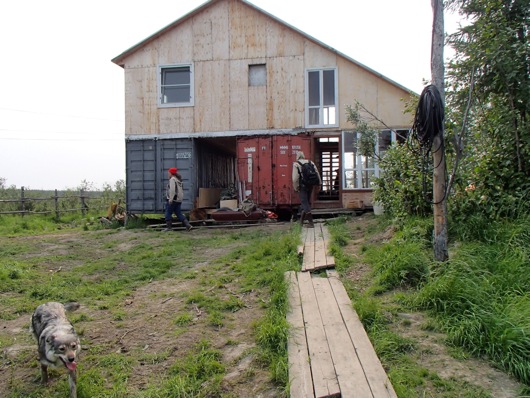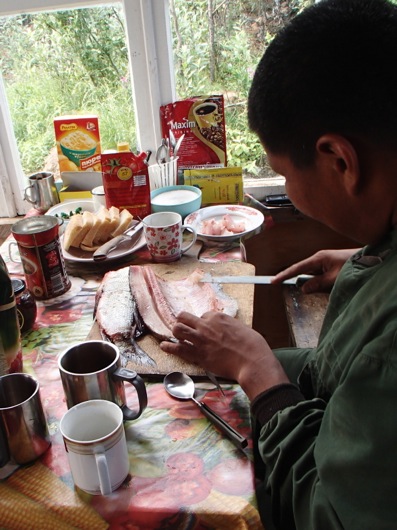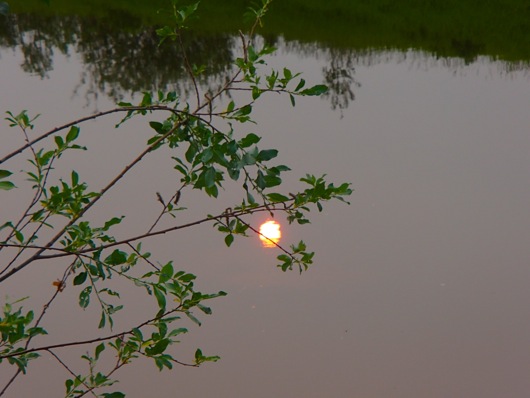(Mark Paricio is a PolarTREC Teacher accompanying the Polaris Project this summer. To read all of Mark’s journals, go to: http://www.polartrec.com/expeditions/siberian-arctic-systems-study )
Life at Pleistocene Park
Having spent the last three days working with the drillers to make a borehole in Pleistocene Park, we are just barely over halfway down to our goal of reaching 15 meters deep. However, in the words of Slava, a worker at Pleistocene Park and native Yucahgir man with an incredibly gentle disposition, “summer ended today.” As the cold weather blew in, we stopped drilling for a couple of days and headed back to the Northeast Science Station, I pause to reflect at the tough life of the workers in the wilderness that surrounds Pleistocene Park.
For a bit of perspective, it took us a three-hour boat ride (getting lost only once!) to get back to Cherskiy today in our underpowered boat. During that time, we passed only three primitive homesteads along the way. The workers of Pleistocene Park are hearty men, definitely living on the edge year round.
The three workers kindly shared their small house and kitchen with us over the last three nights, telling great stories in Russian (translated for me, the only American, by my Russian drilling teammates, Sasha Kholodov and Valentin Spektor) at meal times.

The Pleistocene Park workers house is built on top of two Soviet-era cargo containers. These are elevated off the ground to avoid the problems posed by permafrost soils and -40°C winter weather. The summer kitchen on the right is usable only a few months each year.
Their home is a dry cabin, (no running water or drains), typical of many homes in permafrost regions. This means fetching and boiling water, easier this time of year when the water is liquid, taking waste-water out when the bucket gets full, and of course, using the elevated outhouse. (Outhouses must be elevated as you simply can’t dig easily into the permafrost, and the waste has no where to leach into the frozen ground.)

The water situation in the workers’ dry cabin. Water is fetched from the river in the blue bucket, poured into the silver faucet, used, then taken out in the bucket below.
As I mentioned, mealtime was a joy of swapping stories between the scientists and the workers. I decided that the fishing stories needed no translation – we all exaggerate the size of the fish that got away! However, twice I was treated to freshly-caught white fish that was lightly oiled and salted for only half an hour. I decided that this form of Siberian sushi was priceless!

I was treated to freshly caught white fish, being cut by Slava, a native Yucahgir.
I noticed that nothing escaped the observation of the workers. Their knowledge of the wildlife and permafrost was remarkable (including explaining the large and small bear tracks in the area!) They definitely had a love for this hard but beautiful land.

A reflection of the late day sun on the tributary near Pleistocene Park.
Stay curious my friends! – Mark Paricio




John Schade says
July 21, 2012 at 1:06 pmI am happy to see a story about the workers at the Park. They are a hardy group for sure, and very generous and friendly. I have not had the opportunity to learn as much as you have, Mark, about them but I look forward to the chance next year.